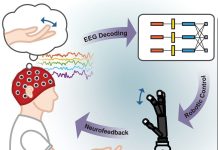
In a new study, researchers have discovered a group of brain cells that could fight off frightening memories from the past.
The brain cells are described as “extinction neurons”. The cells can suppress fearful memories when they are activated and make fearful memories return when they are not.
The new finding may help develop better treatments for post-traumatic stress disorder (PTSD) and phobias.
The research was conducted by neuroscientists at The University of Texas at Austin.
PTSD is a set of reactions that occur in people who have been through a traumatic event that threatened their safety or life or that of people around them.
It often happens in people who experienced car accident, physical or sexual assault, war or torture, or natural disasters.
In PTSD, the frightening memories keep coming back and patients have feelings of intense fear, helplessness or horror.
Previous research has shown that this type of memory recurrence is known as spontaneous recovery, a form of relapse.
However, scientists don’t know the underlying mechanisms.
In the study, the team placed mice in a distinctive box and induced fear with a harmless shock.
After that, when one of the mice was in the box, it would display fear behavior until, with repeated exposure to the box without a shock, the extinction memories (secure memories) formed, and the mouse was not afraid anymore.
The team found that brain cells that suppress fear memories hid in the hippocampus.
The hippocampus is responsible for many aspects of memory and spatial navigation. It may play an important role in tying fearful memories to the place where they happened.
The researchers suggest that the discovery may help explain why one of the leading ways to treat fear-based disorders, exposure therapy, sometimes stops working.
Exposure therapy uses the formation of new memories of safety to override an original fear memory.
But the extinction does not erase the original fear memory but instead creates a new memory that inhibits or competes with the original fear.
The study demonstrates that the hippocampus generates memory traces of both fear and extinction.
The competition between these hippocampal traces determines whether fear is expressed or suppressed.
This means the practices of exposure therapy may need to be improved in the frequency and timing.
The new finding can help understand the potential cause of disorders, like anxiety and PTSD, and they can also help develop potential treatments.
For example, scientists can activate the fear and suppress the extinction trace memories by using a tool called optogenetics.
The leader of the study is Michael Drew, associate professor of neuroscience and the senior author of the study.
The study is published in the journal Nature Neuroscience.
Copyright © 2019 Knowridge Science Report. All rights reserved.



